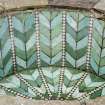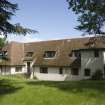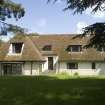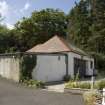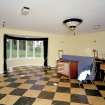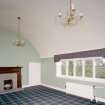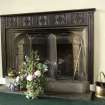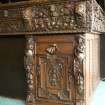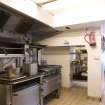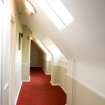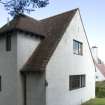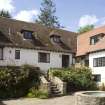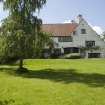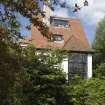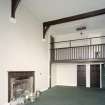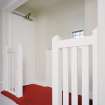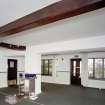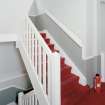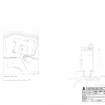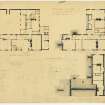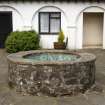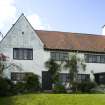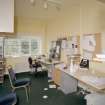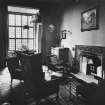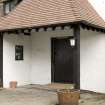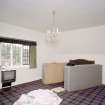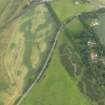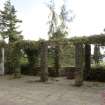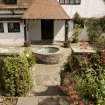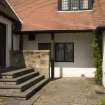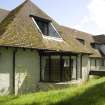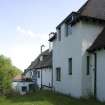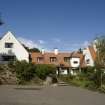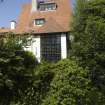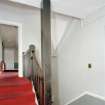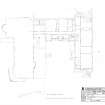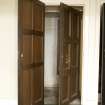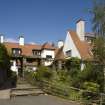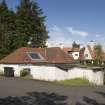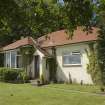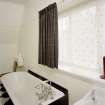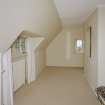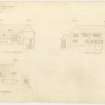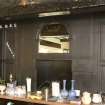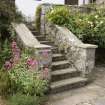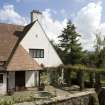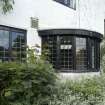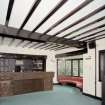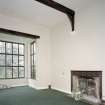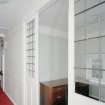Pricing Change
New pricing for orders of material from this site will come into place shortly. Charges for supply of digital images, digitisation on demand, prints and licensing will be altered.
Upcoming Maintenance
Please be advised that this website will undergo scheduled maintenance on the following dates:
Thursday, 30 January: 11:00 AM - 3:00 PM
During these times, some functionality such as image purchasing may be temporarily unavailable. We apologise for any inconvenience this may cause.
Sandford Hotel
Hotel (Period Unassigned), House (20th Century)
Site Name Sandford Hotel
Classification Hotel (Period Unassigned), House (20th Century)
Alternative Name(s) Sandford Cottage; Sandford Hill; Sandford House
Canmore ID 100766
Site Number NO42SW 98
NGR NO 40645 24163
Datum OSGB36 - NGR
Permalink http://canmore.org.uk/site/100766
- Council Fife
- Parish Kilmany
- Former Region Fife
- Former District North East Fife
- Former County Fife
M H Baillie Scott designed Sandford Cottage in 1902 for Harben J Valentine, the Dundee postcard manufacturer. This brick built thatched three-bedroom cottage was to be the Valentine’s family home being in commuting distance of Dundee. The original plans were published in Baillie Scott’s Houses and Gardens of 1906 together with a total cost of £850.
In 1909 Mr. and Mrs. Valentine called Baillie Scott back, to add a wing to the west, to provide more accommodation for their expanding family. A major fire in 1912 meant that the house had to be rebuilt. It is believed that Baillie Scott was called in yet again. Plans of this work do not survive but a survey carried out for a subsequent owner W G N Walker in 1936 probably shows how the house looked in 1912. The logical decision was taken to replace the thatch with tile and to harl the walls to disguise the different building periods. The main addition to the living accommodation was the double height drawing room approached via a minstrel’s gallery. The site for this was blasted from the edge of the quarry which now forms a delightful secret garden. The west wing provides more service accommodation on the ground floor, two large bedrooms and a bathroom on the first and servants accommodation in the attic. The similarities between the 1902 and 1936 plans show that substantial parts of the building must have survived the 1912 fire. T Lindsay Grey appears to have worked with Baillie Scott on the 1936 alterations.
The similarities to work of Baillie Scott’s contemporaries is clear for example the drawing room bay is related to Lutyens’s Munstead Wood, Surrey and the east elevation is similar to Voysey’s Moor Crag, Cumbria which is in walking distance of Blackwell Baillie Scott’s most famous house. Interestingly all these houses are dated 1899. The transformation of Sandford Cottage into a country house called Sandford is perhaps best seen in the creation of the south facing courtyard with its loggia and pergola. The service accommodation is deftly segregated. It looks north and east preserving the privacy of this south and west facing space. The importance of this outside room is celebrated in the deliciously exquisite tile lined fountain.
In the 1980’s Robert Hurd & Partners added a wing on the west side of the courtyard on the original raised west terrace, for The Sandford Hill Hotel, providing extra bedroom accommodation. It is now known as Sandford Country House Hotel. RCAHMS STG
NO42SW 98 40645 24163
Architect: M H Baillie Scott, 1909.
Later rebuilt after fire by or with collaboration of T Lindsey Gray.






























































